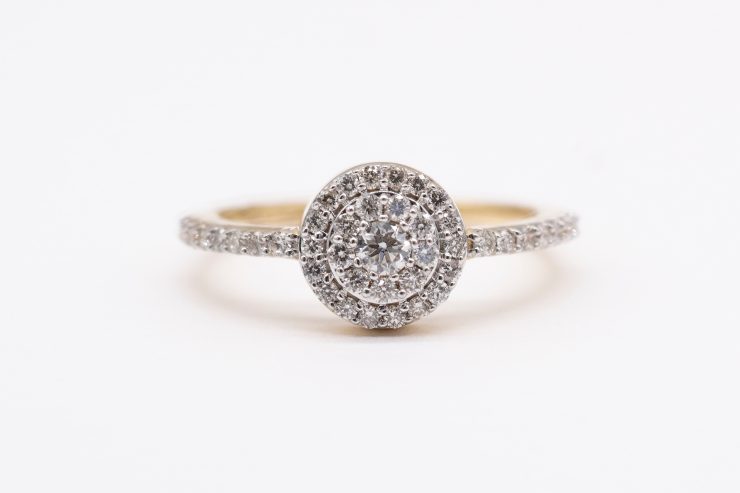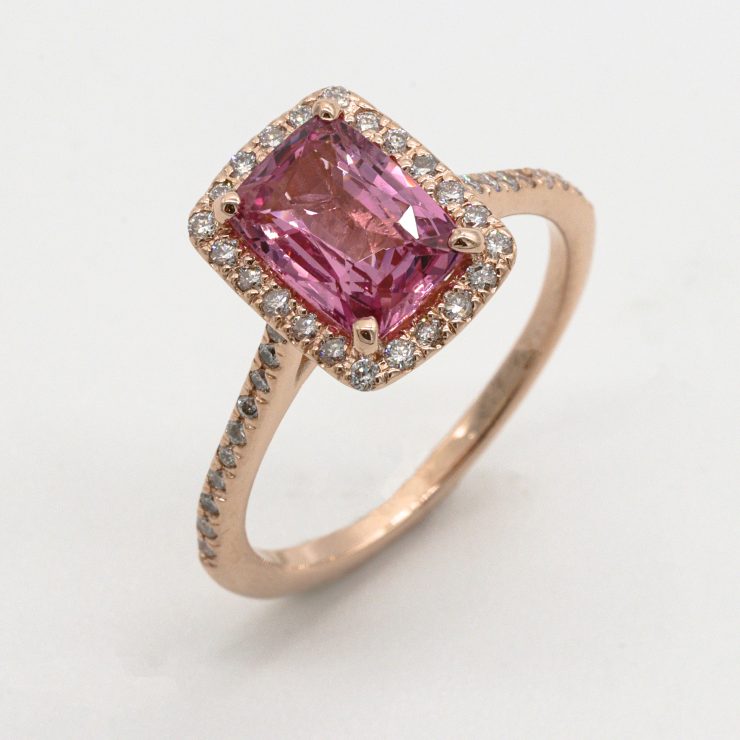Understanding the Diamond Market Cycle
The market for natural diamonds, like many luxury goods, follows a cyclical pattern that is closely tied to consumer demand, global economic trends, and seasonal retail events. One of the first steps to understanding the best time to buy a natural diamond is grasping the broader market cycle. Retailers often plan inventory and pricing based on expected seasonal peaks, such as the winter holiday season, Valentine’s Day, and summer weddings. During these peak demand periods, prices may increase slightly due to higher consumer interest. Conversely, during off-peak times, retailers may offer better prices to move inventory. Additionally, diamond supply can be influenced by mining output, geopolitical factors in producing regions, and wholesale pricing set by major market players such as De Beers. Recognizing these patterns can help consumers strategically time their purchases to align with periods when demand is lower, and sellers are more motivated to offer competitive pricing.

Buying During the Holiday Season: Pros and Cons
The months of November and December are traditionally the most active for diamond sales. The holiday season, particularly around Christmas and New Year’s, sees a surge in engagements and gift-giving, prompting jewelers to roll out expansive advertising campaigns and curated collections. While the abundance of inventory and marketing can be advantageous for shoppers in terms of variety and presentation, this period is not always ideal in terms of pricing. Due to increased demand, retailers are less likely to offer significant discounts. However, the competition among sellers can lead to special promotions, financing offers, or bundled deals, particularly in larger chain stores. Buyers should also be cautious, as the emphasis on emotional purchasing during this time may overshadow budgetary concerns. Thus, while the holiday season may offer convenience and selection, it may not provide the best value for cost-conscious shoppers seeking to purchase natural diamonds at the lowest possible price.
Valentine’s Day and Engagement Season Dynamics
Another key window of high diamond sales activity occurs in the lead-up to Valentine’s Day, which represents one of the most emotionally charged buying periods for jewelry, particularly engagement rings. Retailers often capitalize on this emotional connection with aggressive marketing and targeted campaigns beginning in January. Much like the holiday season, this surge in demand can inflate prices slightly or lead to reduced room for negotiation. However, post-Valentine’s Day—particularly in late February and March—often brings a dip in demand. This is a strategic time for potential buyers to consider making their purchase, as retailers may be clearing out remaining inventory or adjusting pricing due to decreased foot traffic. Additionally, because many engagements are planned for the holiday or Valentine’s period, fewer consumers are actively searching during the late winter months, giving determined buyers more leverage in securing favorable deals on natural diamonds.
Springtime and Tax Return Season Opportunities
Spring can be an opportune time to buy natural diamonds, particularly due to the financial behavior linked with tax season. In many countries, including the United States, tax refunds are issued between February and April, increasing disposable income for a segment of the population. Some retailers anticipate this influx of spending power and tailor promotional events to coincide with it. For consumers, this could mean access to spring sales, flexible financing terms, or exclusive collections. Another factor contributing to favorable spring pricing is the relative lull in major gift-giving holidays during this season, reducing overall demand. Buyers may find that jewelers are more willing to negotiate or offer added perks, such as complimentary settings or certifications, during this quieter time. Additionally, purchasing a diamond in the spring allows ample time for customization, resizing, or redesigning before popular summer wedding dates, making this season particularly useful for proactive planners.
Summer Months and Wedding Season Implications
Summer is traditionally associated with weddings, anniversaries, and milestone celebrations, which naturally influence diamond sales. While this season sees high demand for bridal jewelry, including engagement rings, wedding bands, and diamond earrings or necklaces as gifts, it also brings with it a few unique opportunities. For instance, smaller retailers and independent jewelers may use the early summer months—especially June and July—to offer targeted sales and inventory clearance events ahead of the fall buying season. However, prices during this time can fluctuate depending on the type of diamond and whether it is part of a wedding-related collection. Moreover, many jewelry buyers during the summer are driven by deadlines tied to wedding dates, which can limit their bargaining power. That said, late summer—particularly August—often represents a quieter stretch before the pre-holiday marketing cycle begins, potentially making it one of the best times to find discounts on loose diamonds or off-season designs.

Fall Season: Hidden Gem for Diamond Bargains
The fall months—particularly September and October—can be one of the most overlooked but strategic times to purchase a natural diamond. This period falls between the summer wedding rush and the year-end holiday buying frenzy, creating a relative lull in consumer activity. Retailers, especially those with inventory remaining from earlier in the year, may offer discounts or run sales events to stimulate interest before the holiday ramp-up begins. Additionally, suppliers may be looking to meet quarterly sales goals during this time, which can result in favorable wholesale pricing that retailers might pass on to buyers. Fall is also a popular time for jewelry expos and trade shows, particularly in cities known for their jewelry districts, providing informed buyers with access to a broader selection and possibly better pricing. The slower pace also gives consumers more time for due diligence, such as comparing prices, verifying diamond certifications, and customizing settings without the pressure of peak-season shopping.
Expert Advice on Timing: What the Professionals Say
Industry insiders and gemologists often recommend that buyers aim for periods just after peak seasons when retailers are more inclined to negotiate and reduce prices on unsold inventory. For instance, many professional jewelers suggest shopping between late February and early April, or again in late August through October. These windows typically offer a good balance between inventory availability and reduced pricing pressure. Another pro tip is to monitor diamond price indices, which are published by organizations such as Rapaport or IDEX and can help track trends in wholesale pricing. Buyers who follow these indicators closely may be able to identify when prices are trending downward, providing an additional edge. Experts also advise avoiding last-minute purchases, especially during holidays, as limited selection and emotional decision-making can lead to suboptimal deals. Planning several months in advance and researching market cycles allows for smarter, more budget-conscious diamond acquisitions.
Online vs. In-Store: Timing and Strategy Differences
The rise of online diamond retailers has introduced new variables in seasonal buying patterns. Online stores tend to have more dynamic pricing models and can update prices more frequently based on real-time market conditions. This agility can benefit consumers during off-peak months when online platforms may quietly lower prices without running broad promotions. Unlike brick-and-mortar stores, which may be constrained by rent and seasonal foot traffic, online sellers often use data analytics to tailor discounts based on buyer behavior, time of year, or even browsing history. Seasonal trends still apply, however; for example, online retailers often mirror the in-store holiday promotions and offer Valentine’s Day discounts. The key difference is that online shoppers might have more control and time to compare diamond specifications side-by-side. Additionally, many online retailers offer generous return policies and virtual consultations, allowing buyers to confidently purchase during less busy times of the year, with fewer impulse-driven distractions.
Additional Tips for Timing Your Purchase
Beyond seasonal considerations, several other factors can influence the timing of a natural diamond purchase. Currency fluctuations, for instance, can impact diamond pricing for international buyers, especially in countries where diamonds are imported. Additionally, the state of the global economy and consumer sentiment can alter supply chain dynamics, leading to temporary price adjustments. It is also worth considering special events such as store anniversaries, clearance sales, or Black Friday promotions. While these events don’t always guarantee the lowest prices, they often provide an opportunity to buy with added value, such as free services, upgrades, or accessories. Buyers should also look for hidden costs that can affect the overall value, such as certification, setting, resizing, or insurance. Lastly, aligning the purchase with personal milestones—such as an upcoming engagement or anniversary—may justify paying a slight premium if it ensures the diamond arrives in time and meets specific expectations.
Conclusion: Timing Matters, But Preparation is Key
While there is no universally perfect time to buy a natural diamond, understanding the cyclical nature of the diamond industry and aligning one’s purchase with strategic seasonal windows can lead to substantial savings and better buying experiences. Fall and late winter often offer the best balance between pricing, inventory, and negotiation potential. However, savvy consumers should not rely solely on seasonal timing; rather, they should combine market awareness, expert insights, and personal needs to determine the ideal moment. Whether shopping online or in-store, planning ahead and doing thorough research remains the most effective way to ensure a high-quality diamond at a competitive price.